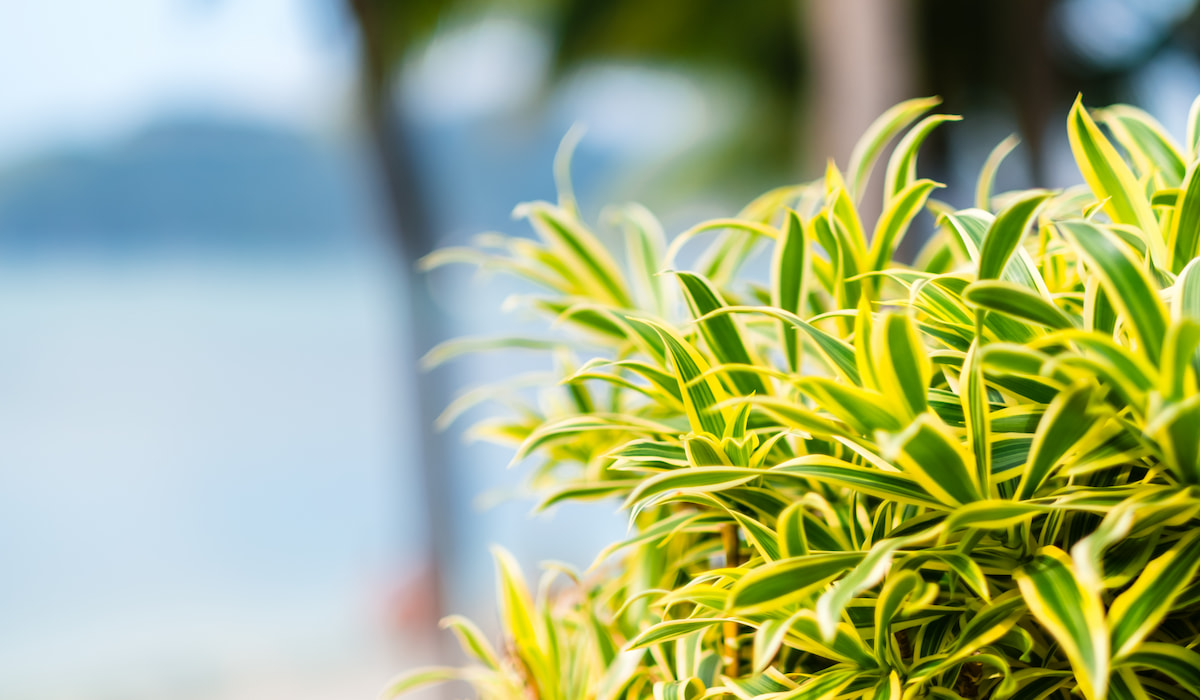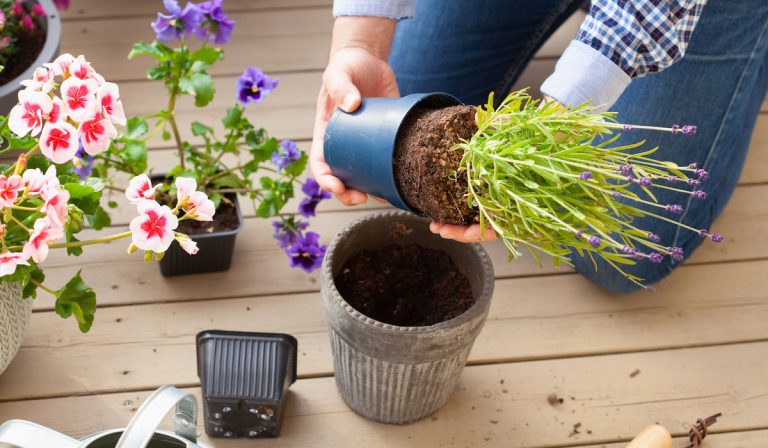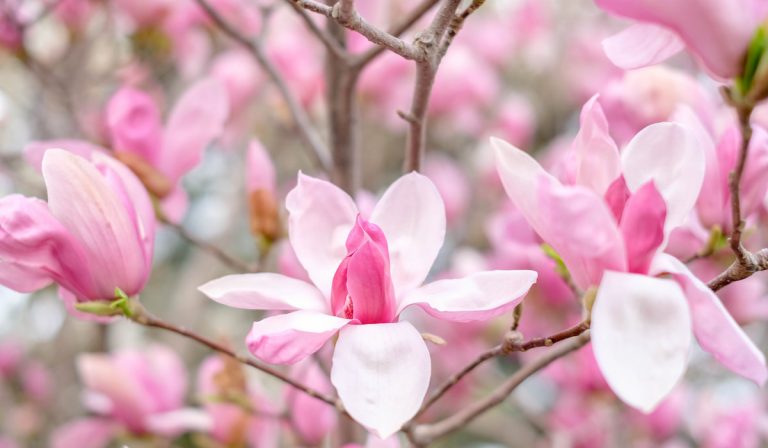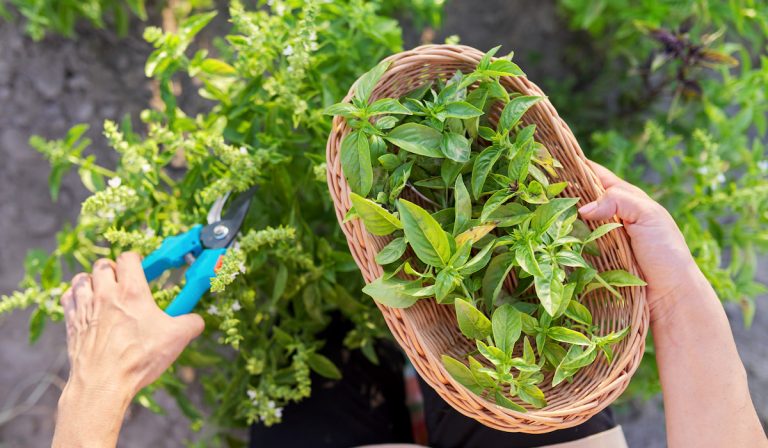7 Land Plants That Can Live in Your Aquarium
Incorporating garden plants in your aquarium will undoubtedly give it a facelift. But beyond that, having plants in your aquarium gives your fish a form of shelter.
One issue with land plants is that they do not want to be submerged underwater. When placed in an aquarium, house plants will do fine for a while. However, they will eventually rot and die.
Another problem with using land plants in an aquarium is that they are usually grown in greenhouses. In these greenhouses, the plants are sprayed with insecticides and pesticides, which can harm your aquatic pets.
While it might seem like no land plant can survive in your aquarium, there are actually a few that can. So, in this article, we discuss some land plants that can live in your aquarium.
Table of Contents
1. Pothos
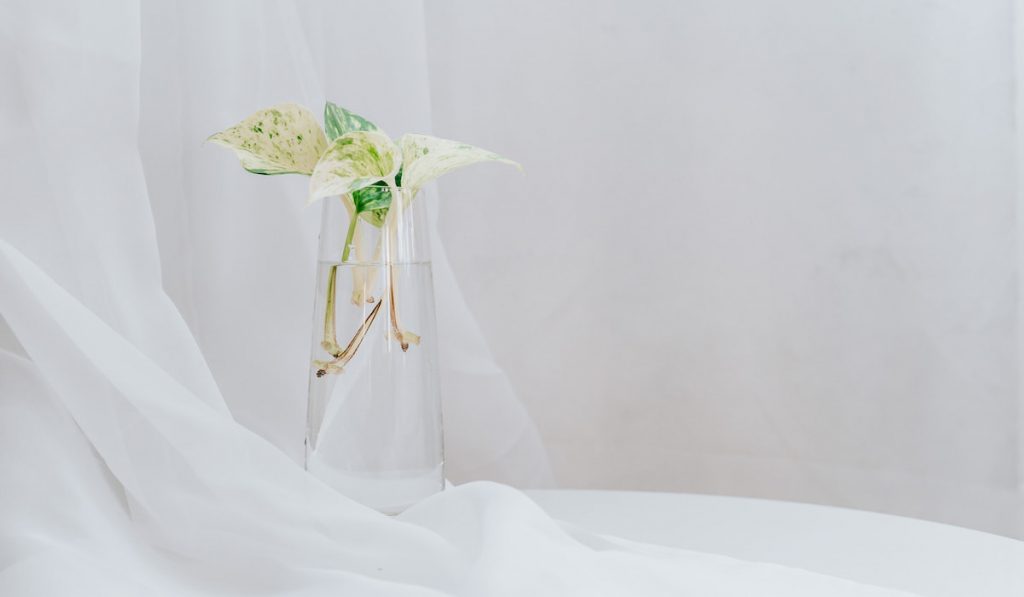
Pothos is a well-known houseplant, which is also known as Devil’s Ivy due to its extreme hardiness.
Pothos is hard to kill and easy to care for. Understandably so since it can survive in various light conditions and environments.
Pothos can be used not only in aquariums but also in bioactive terrariums and hydroponic systems.
One reason people keep aquarium plants is to absorb the toxic nitrogen compounds from the water. Although Pothos does not filter particles from aquaria, it reduces nitrate levels. This, in turn, keeps your fishes healthy and happy.
If you own plant-eating fish, placing the Pothos in a hang-on filter should keep it out of danger. Ensure there is enough distance between the Pothos and the filter’s motor compartment. This will prevent the roots from clogging up the impeller.
If the fish will not attack your Pothos, place the roots directly into the aquarium allowing the leaves to grow out of the water. Secure the plant with the aquarium’s lid to ensure it does not fall in.
2. Peace Lily
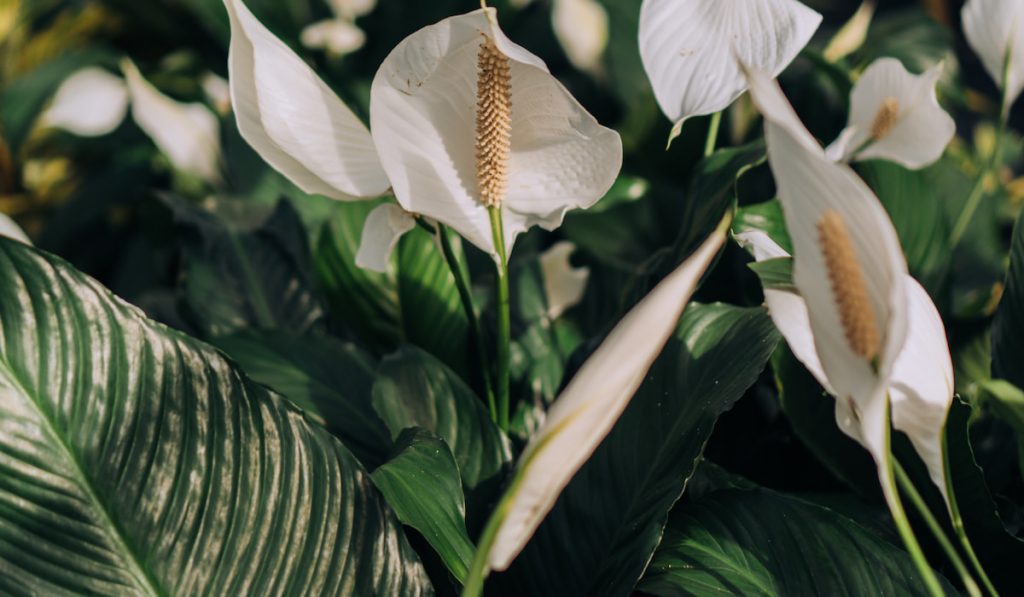
Having a Peace Lily in your aquarium is an exotic and unusual way to show off this green leafy plant.
Peace Lily can be grown in an aquarium without having any fish. However, many aquarium owners add a betta fish to the aquarium, making it look more colorful.
To use Peace Lily as your aquarium plant, purchase an aquarium with clear glass and a broad base. This is especially important if you intend to a betta fish.
The Peace Lily you use should be small or medium-sized with a healthy root system. Ensure the diameter of the plant is smaller than the opening of the container. A crowded aquarium opening will restrict airflow to the plant.
Apart from the aquarium and Peace Lily, you will need a craft knife or scissors and pebbles or aquarium gravel. You should also get a plastic plant tray, a large bucket, a betta fish, and a jug of distilled water.
Based on your preference, you may also add other decorative accessories and figurines.
The aquarium should be located where the light exposure to the Peace Lily is low. Locations under fluorescent lights or near east or north-facing windows are perfect for Peace Lily.
If you intend to add fish, ensure you change one-quarter of the water each week to keep it clean and clear. Flake food that clouds water quickly should be avoided.
Whenever the water starts to look brackish, remove the fish and clean the tank. Once cleaned, fill it with fresh water again.
3. Cryptocoryne Wendttii
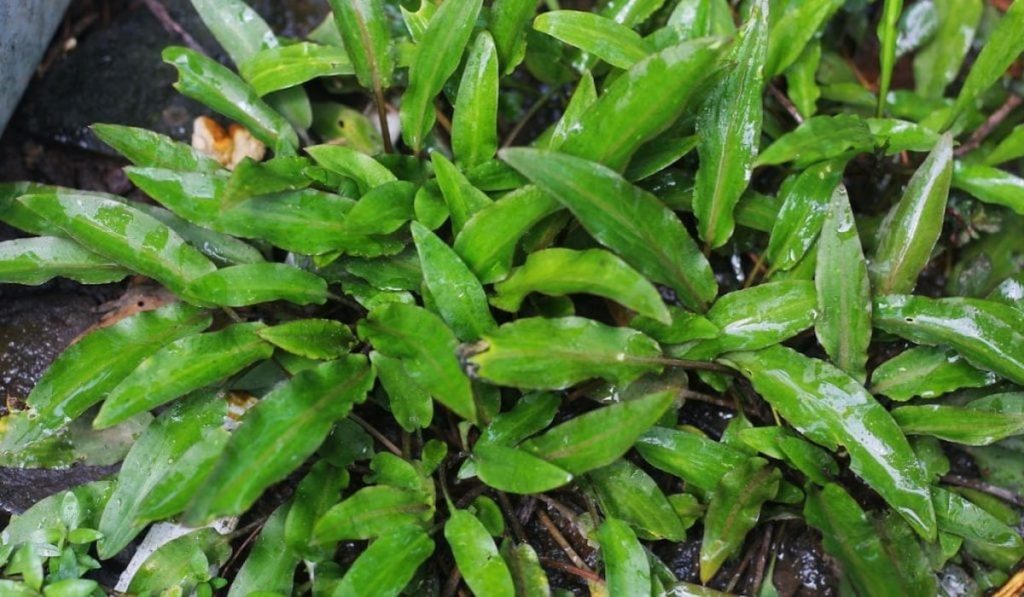
Cryptocoryne Wendttii is the perfect plant for aquariums with hard water. Cryptocoryne Wendttii is easy to care for and can grow in several aquarium water conditions.
Cryptocoryne Wendttii has beautiful green leaves and can reach a height of around 6 inches and a rosette of 3-6 inches wide. Depending on the aquarium lighting conditions, Cryptocoryne Wendttii will have a brown coloration to it.
Cryptocoryne Wendttii is originally native to Sri Lanka and is mostly found growing in shaded areas of rivers and streams.
In Florida, it has become an invasive species over the years. This invasiveness is perhaps proof of its ability to thrive in diverse water conditions.
Cryptocoryne Wendttii requires water conditions of 72-78° F and a pH of 6.0-8.0. When propagating Cryptocoryne Wendttii, start by dividing and separating its roots. Next, replant the divided roots in another part of the aquarium.
4. Dracaena

Dracaena, also referred to as Lucky Bamboo, is a common type of house plant. It is easy to care for and does not even require soil to grow.
A few inches of water will suffice. Not only is Dracaena not a type of bamboo, but it is also not a true aquatic plant.
Dracaena is not really a relative of bamboo, yet it is capable of surviving floods. With sufficient nutrients and the proper care, you can introduce Dracaena safely to an aquarium.
Dracaena is an ideal plant for aquariums of various sizes due to its flexible habits. Its survival mechanism allows it to extend its life span by several years. It is also easy to grow, and it requires only a few hours of indirect and bright light daily.
Dracaena is a freshwater plant and will not thrive in brackish or marine water aquariums. The required water pH range is 6.0-6.5, although they may still thrive over a wider range. Dracaena is not sensitive to the hardness of the water.
Dracaena cannot withstand dry roots. So, it will die when the water surrounding it evaporates or when its soil dries out.
Aside from the lovely and unique backdrop Dracaena gives your aquarium, it has several benefits. For one, the roots provide shelter for several aquatic bacteria. Some fishes also tend to nibble on the root tips.
Dracaena releases oxygen, which can be beneficial to the living organisms in the aquarium. It also makes use of the CO2 and waste produced by the fishes and other aquarium inhabitants.
So, in a way, Dracaena can help mop up some waste in your aquarium.
5. Java Fern
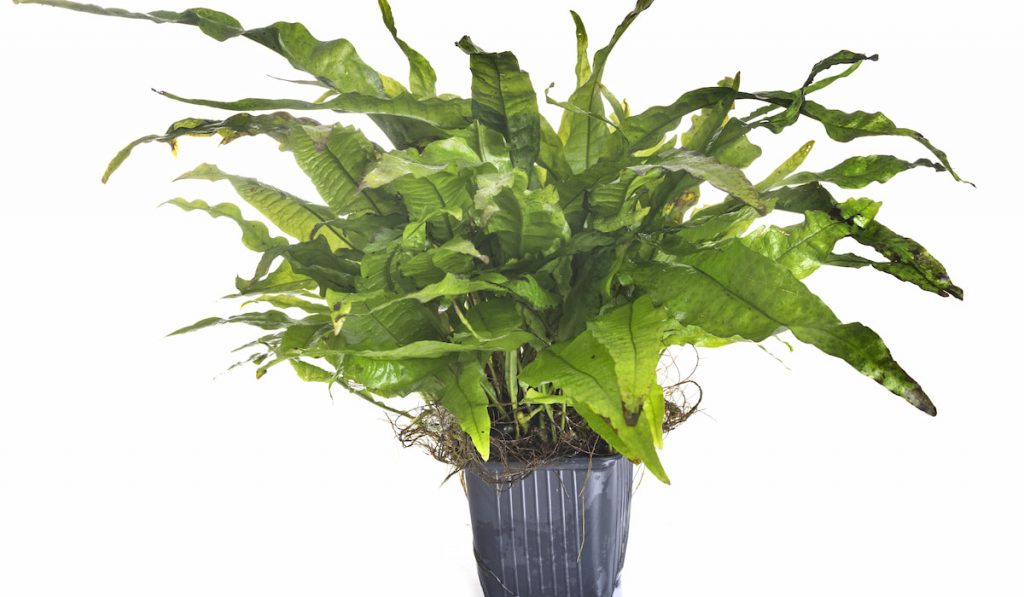
Java Fern is native to Southeast Asia and is found along streams and riverbanks in China, India, Malaysia, and Thailand.
Java Fern can be attached to wood and rocks in your aquarium. It is easy to care for, and it grows even in low lighting. You can expect a Java Fern to grow up to around 8 inches.
Java Ferns come with pod-like structures on their leaves for propagating new plants. They can be used to create an Amazon-Riverbed look in your aquarium.
Most fishes do not eat Java Fern, and once it is attached to driftwood or rocks, its chances of survival are high.
6. Amazon Sword
Amazon Sword is one of the most sold plants for aquarium use. It is a native of the remarkably diverse amazon basin and gets its name from its blade-like leaves.
Amazon Sword grows to a height of 15-18 inches and is made up predominantly of leaves. Its green leaves spread out and can sometimes reach the top of an aquarium.
Amazon Sword is easy to grow and is highly tolerant of aquarium water quality and temperature. These features make it perfect for your aquarium.
7. Spider Plants
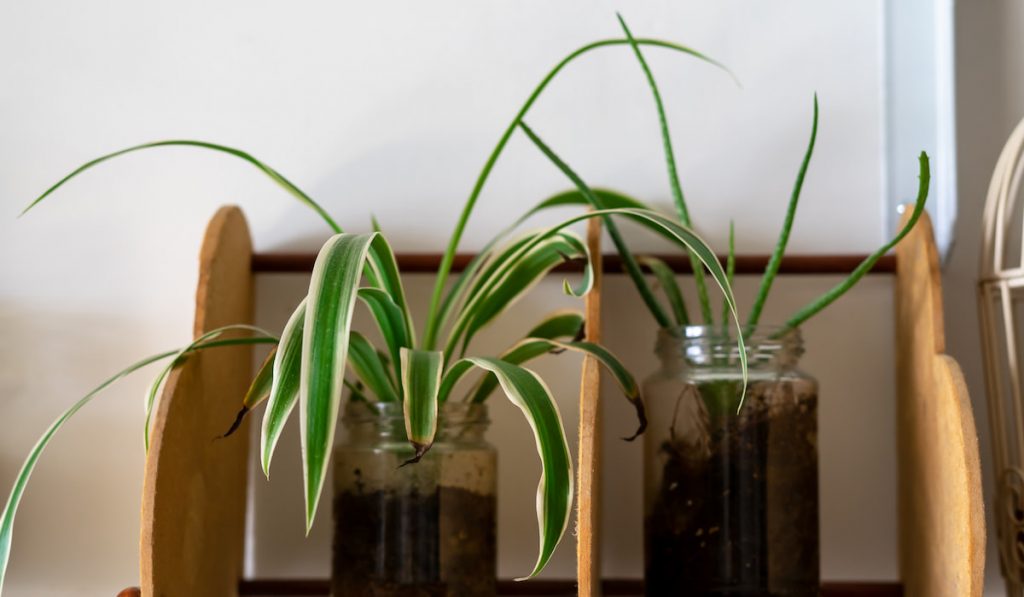
Since Spider Plants grow on land and thrive in soil, putting them in water is tricky.
A Spider Plant will only survive in an aquarium if you plant the roots underwater while the leaves are not submerged. If submerged, they will rot because they are not in their natural habitat.
Some environmental features of an aquarium are essential for Spider Plants to thrive. They include water aeration, higher water volume, and lighting.
Spider Plants improve the overall appearance of your aquarium. The oxygen used by the Spider Plant’s roots is balanced by the other plants in your tank. The aeration system and incorporated light in the aquarium aid the Spider Plant’s development.
Resources
- https://www.gardeningknowhow.com/ornamental/water-plants/wgen/can-you-grow-garden-plants-aquarium.htm
- https://www.newson6.com/story/5e6fc8edf86011d4820c3a19/best-aquarium-plants–21-popular-plants-for-a-home-aquarium
- https://aquanswers.com/bamboo-in-aquarium-truths-myths/
- https://readytodiy.com/spider-plant-in-aquarium-fish-tank-bowl-aquaponics-will-it-survive-0051/
- https://www.aquariumcoop.com/blogs/aquarium/pothos
- https://www.gardeningknowhow.com/houseplants/peace-lily/peace-lily-aquarium-plants.htm
- https://www.tankarium.com/lucky-bamboo-in-aquarium/

